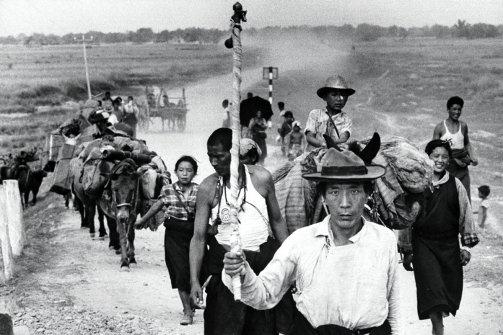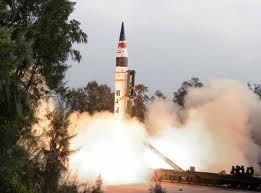October 30, 2012
China gave India a “lesson” in 1962. Study it now.

The blitzkrieg sent crowds of men, women, and children running for sanctuary. (Larry Burrows / Time & Life Pictures-Getty Images)
October 30, 2012
China gave India a “lesson” in 1962. Study it now.

The blitzkrieg sent crowds of men, women, and children running for sanctuary. (Larry Burrows / Time & Life Pictures-Getty Images)
The rest of the world may have forgotten the anniversary, but a neglected border war that took place 50 years ago is now more pertinent than ever. Before dawn on the morning of Oct. 20, 1962, the People’s Liberation Army launched a surprise attack, driving with overwhelming force through the eastern and western sections of the Himalayas, deep into northeastern India.
On the 32nd day of fighting, Beijing announced a unilateral ceasefire, and the war ended as abruptly as it had begun. Ten days later, the Chinese began withdrawing from the areas they had penetrated on India’s eastern flank, between Bhutan and Burma, but they kept their territorial gains in the West—part of the original princely state of Jammu and Kashmir. India had suffered a humiliating rout, and China’s international stature had grown substantially.
Today, half a century after the Sino-Indian War, the geopolitical rivalry between the world’s two main demographic titans is again sharpening, as new disputes deepen old rifts. Booming bilateral trade has failed to subdue their rivalry and military tensions, and China has largely frittered away the political gains of its long-ago victory. But the war’s continuing significance extends far beyond China and India. By baring key elements of Beijing’s strategic doctrine, it offers important lessons, not only to China’s neighbors but also to the U.S. military. Here are just six of the principles the People’s Republic of China relied on in attacking India—and will undoubtedly use again in the future.
SURPRISE China places immense value on blindsiding its adversaries. The idea is to inflict political and psychological shock on the enemy while scoring early battlefield victories. This emphasis on tactical surprise dates back more than 2,000 years, to the classic Chinese strategist Sun Tzu, who argued that all warfare is “based on deception” and offered this advice on how to take on an opponent: “Attack where he is unprepared; sally out when he does not expect you. These are the strategist’s keys to victory.” The Chinese started and ended the 1962 war when India least expected it. They did much the same thing when they invaded Vietnam in 1979.
CONCENTRATE China’s generals believe in hitting as fast and as hard as possible, a style of warfare they demonstrated in their 1962 blitzkrieg against India. The aim is to wage “battles with swift outcome” (su jue zhan). This laser focus has been a hallmark of every military action Communist China has undertaken since 1949.
STRIKE FIRST Beijing doesn’t balk at using military force for political ends. On the contrary, China has repeatedly set out to “teach a lesson” to adversaries so they will dare not challenge Beijing’s interests in the future. Chinese Premier Zhou Enlai explained that the 1962 war was meant to “teach India a lesson.” Paramount leader Deng Xiaoping used the same formulation in 1979 when he became the first Chinese Communist leader to visit Washington and told America’s then-president Jimmy Carter that “Vietnam must be taught a lesson, like India.” China invaded its Southeast Asian neighbor just days later. (India’s foreign minister happened to be in China at the time of the invasion, seeking to revive the bilateral relationship that had been frozen since 1962.) China ended its Vietnam invasion and withdrew from Vietnam after 29 days, declaring that Hanoi had been sufficiently chastised.
WAIT FOR IT Choose the most opportune moment. The 1962 war was a classic case: the attack coincided with the Cuban missile crisis, which brought the world to the brink of nuclear Armageddon and thereby distracted potential sources of international support for India. No sooner had the U.S. signaled an end to the face-off with Moscow than China declared a unilateral ceasefire in its invasion of India. During the war, the international spotlight remained on the U.S.-Soviet showdown, not on China’s bloody invasion of a country that then had good relations with both the U.S. and the Soviet Union.
The pattern has persisted. After America pulled out of South Vietnam, China seized the Paracel Islands. In 1988, when Moscow’s support for Vietnam had faded and Afghanistan had killed the Soviets’ enthusiasm for foreign adventures, China occupied the disputed Johnson Reef in the Spratlys. And in 1995, when the Philippines stood isolated after having forced the U.S. to close its major military bases at Subic Bay and elsewhere on the archipelago, China seized Mischief Reef.

Caught napping by the invasion, India frantically began training new recruits. (Terry Fincher / Express-Getty Images)
Courtesy: Dailybeast (author: Brahma Chellaney)
















































































































